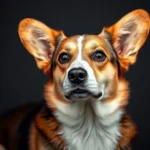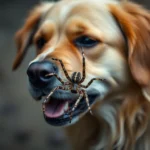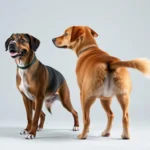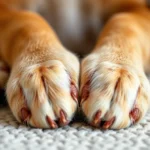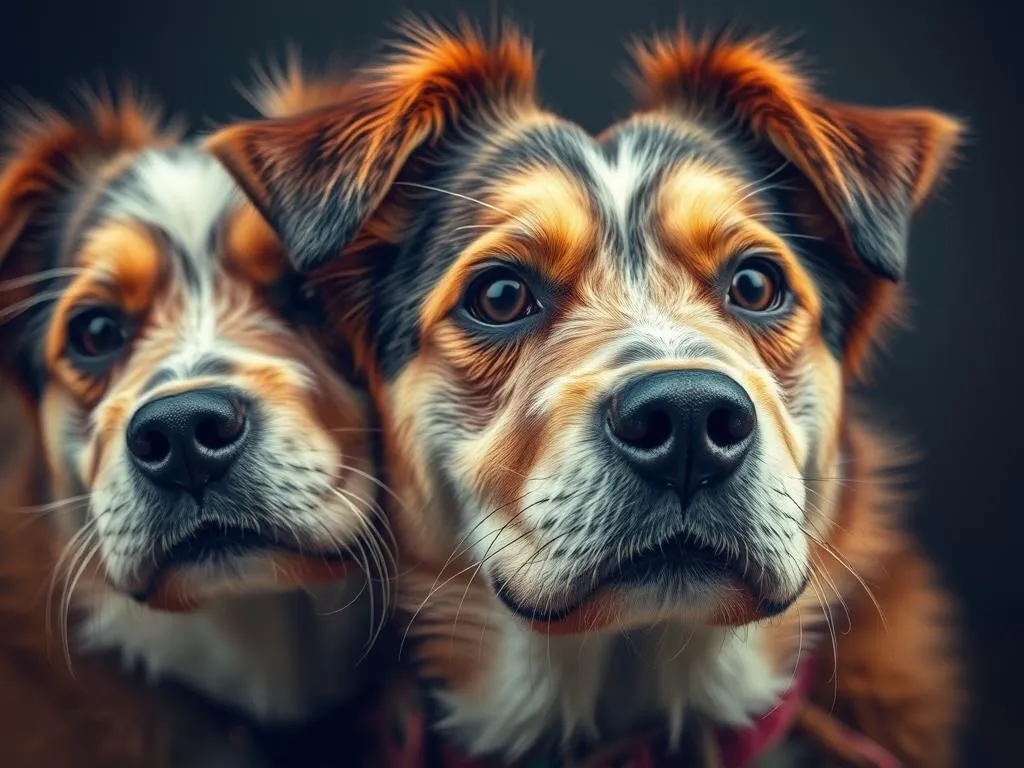
Introduction
When it comes to understanding your dog’s coat, one of the key elements to consider is guard hairs. But what are guard hairs on dogs, and why are they essential? Guard hairs are the long, stiff, protective outer layer of a dog’s fur coat. They play a significant role in providing both protection and insulation, contributing to your dog’s overall health and well-being.
Understanding the importance of guard hairs in your dog’s coat care is crucial. A well-maintained coat can prevent various health issues, including skin problems and infections. By taking the time to learn about guard hairs and how to care for them, you can enhance your dog’s health and quality of life.
Understanding Dog Hair Types
Types of Dog Hair
To appreciate the role of guard hairs, it’s essential to understand the different types of dog hair. Dogs typically have three main types of hair:
-
Guard Hairs: These are the long, coarse hairs that form the outer layer of the coat. They protect the dog from environmental factors such as rain, snow, and UV rays. Guard hairs also help to keep the undercoat dry.
-
Undercoat: This is the soft, fluffy layer beneath the guard hairs. The undercoat provides insulation, helping to keep your dog warm in cold weather and cool in hot weather. It is particularly prominent in double-coated breeds.
-
Primary Hair: Sometimes referred to as the “top coat,” primary hair is similar to guard hairs but usually softer and more flexible. It serves aesthetic purposes and contributes to the breed’s overall appearance.
Function of Each Hair Type
Each type of hair serves unique functions:
-
Protection: Guard hairs provide a barrier against environmental elements like rain, snow, and abrasions. They play a vital role in keeping your dog’s skin safe from cuts and scratches.
-
Insulation: The undercoat is crucial for temperature regulation. It traps air close to the body, providing warmth during cold conditions and allowing for breathability in warmer weather.
-
Aesthetic Appeal: The combination of guard hairs and primary hair contributes to the dog’s appearance. Maintaining a healthy coat is essential for meeting breed standards and enhancing your dog’s beauty.
The Role of Guard Hairs in Dog Health
Protection from Elements
One of the primary functions of guard hairs is protection. They act as a shield against various weather conditions. Whether it’s rain, snow, or strong UV rays, guard hairs help to keep your dog’s skin dry and protected. This is particularly important for outdoor dogs who spend a significant amount of time in various environments.
Moreover, guard hairs play a crucial role in preventing injuries. They can help protect against abrasions and scratches, which can lead to infections or other skin issues. This protective barrier is vital for maintaining your dog’s skin integrity.
Impact on Skin Health
Healthy guard hairs contribute significantly to your dog’s skin health. A well-maintained coat reduces the risk of skin conditions such as infections, irritations, and allergies. When guard hairs are healthy, they help to keep the skin clean and free from debris that can cause problems.
Additionally, guard hairs can aid in managing allergies. If your dog has sensitivities, a healthy coat can help minimize the exposure of allergens to the skin. This is particularly important for breeds that are prone to skin issues.
Behavioral Impact
A healthy coat, supported by strong and well-maintained guard hairs, can influence your dog’s behavior and overall well-being. Dogs with healthy coats tend to be more comfortable and active. When their skin is protected and healthy, they are less likely to experience discomfort or irritation, which can lead to a more vibrant and active personality.
How to Maintain Healthy Guard Hairs
Regular Grooming
One of the best ways to maintain healthy guard hairs is through regular grooming. This not only keeps your dog’s coat looking good but also promotes healthy skin underneath.
-
Brushing Techniques: Use a brush that is suitable for your dog’s coat type. For dogs with longer guard hairs, a slicker brush may be effective, while a bristle brush can work well for shorter coats. Make sure to brush in the direction of hair growth to avoid pulling and discomfort.
-
Tools for Grooming: Invest in quality grooming tools. A good brush, comb, and deshedding tool can make a significant difference in the health of your dog’s coat. Regular grooming sessions will help to remove loose hair, dirt, and debris, keeping your dog’s coat clean and healthy.
Diet and Nutrition
Diet plays a crucial role in maintaining healthy guard hairs. A well-balanced diet rich in essential nutrients can enhance the quality of your dog’s coat.
-
Importance of Omega Fatty Acids: Omega fatty acids, particularly Omega-3 and Omega-6, are vital for skin and coat health. They help to keep the skin moisturized and promote a shiny, healthy coat. Foods rich in these fatty acids include fish oil, flaxseed oil, and certain commercial dog foods formulated for skin health.
-
Supplements: If your dog’s diet lacks sufficient nutrients, consider adding supplements. Consult your veterinarian for recommendations on the best supplements for enhancing coat health, focusing on those that promote strong guard hairs.
Bathing and Skincare
Bathing your dog is another important aspect of coat care. However, it’s crucial to do it correctly to avoid damaging the guard hairs.
-
Frequency of Bathing: The frequency of bathing depends on your dog’s coat type and lifestyle. Generally, dogs with longer or thicker coats may need less frequent baths, while active dogs that spend time outdoors may require more regular cleaning. A good rule of thumb is to bathe your dog every 4 to 8 weeks.
-
Choosing the Right Shampoo: Select a shampoo formulated for dogs, avoiding human products that may irritate their skin. Look for shampoos containing natural ingredients, such as aloe vera or oatmeal, which provide moisture and soothe the skin. Avoid harsh chemicals that can strip the coat of its natural oils.
Common Problems Associated with Guard Hairs
Shedding
Understanding shedding patterns in dogs is essential for recognizing what’s normal and what’s not.
-
Understanding Shedding Patterns: All dogs shed to some degree, but the amount can vary greatly between breeds. Guard hairs typically shed along with the undercoat during seasonal changes, which is normal.
-
Causes of Excessive Shedding: If you notice your dog shedding excessively, it could indicate underlying health issues or environmental stressors. Factors like allergies, poor diet, hormonal imbalances, or skin infections can lead to increased shedding.
Dull or Matted Guard Hairs
A healthy coat should be shiny and free from mats or tangles.
-
Signs of Poor Coat Health: Dull, brittle, or matted guard hairs can indicate poor health or grooming habits. If your dog’s coat appears lackluster or feels rough, it may be time to reassess their grooming routine and diet.
-
Solutions for Matted Fur: If your dog’s guard hairs become matted, gently detangle them with a comb or use a detangling spray designed for dogs. In severe cases, it may be necessary to trim the mats out or seek professional grooming assistance.
When to Consult a Veterinarian
Recognizing Health Issues
It’s essential for dog owners to be vigilant about their pet’s coat and skin health.
-
Signs of Skin or Coat Problems: Look for symptoms that may require veterinary attention, such as excessive scratching, redness, swelling, or hair loss. These signs can indicate underlying health issues that need to be addressed promptly.
-
Routine Check-Ups: Regular veterinary visits are crucial for monitoring your dog’s overall health, including coat condition. Your veterinarian can offer advice on maintaining healthy guard hairs and suggest any necessary treatments.
Professional Grooming Advice
For some dogs, professional grooming may be beneficial.
- Consulting Professionals: If you’re unsure about your dog’s grooming needs or notice persistent coat problems, don’t hesitate to consult a professional groomer or veterinarian. They can provide tailored advice and services to ensure your dog’s coat remains healthy and vibrant.
Conclusion
Understanding guard hairs and their significance in your dog’s health care is vital for every dog owner. From protecting against environmental elements to maintaining skin health, guard hairs are essential for your dog’s well-being. Regular grooming, a balanced diet, and proper bathing techniques are key to keeping these protective hairs healthy.
By prioritizing coat health, you not only enhance your dog’s appearance but also contribute significantly to their overall wellness. Regular monitoring and appropriate care can help prevent issues and ensure that your furry friend enjoys a happy and healthy life.
